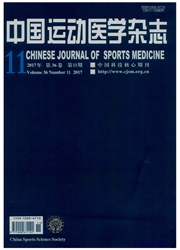

 中文摘要:
中文摘要:
目的:探讨计算机三维重建技术在颞下颌关节开闭口运动研究中的应用。方法:利用生物塑化技术制作1.0mm厚的闭口位、大开口位的颞下颌关节的薄层断面标本,在SGI工作站上对关节盘、髁突等结构进行三维重建及相关测量。结果:计算机三维重建图像可显示闭口位、大开口位时颞下颌关节形态、位置变化及其三维解剖结构关系。重建结构均能单独显示、任意搭配显示或整体显示,并可绕任意轴进行旋转,任意径线及角度均可适时测量。结论:计算机三维重建技术对于颞下颌关节运动解剖研究具有重要应用价值。
 英文摘要:
英文摘要:
Objective To explore the role of the computerized 3D reconstruction of the human temporomandibular joint in studying the anatomy of the closed and wide opened mandibular movement. Methods Plastication technigue was used to make equidistant serial thin(1.0mm thick) sections of the human temporomandibular joint (TMJ) at wide- open mouth and closed - mouth position. A SGI workstation was employed to reconstruct the articular discs, condylar process and mandibular fossa in three dimensions. Results The computerized 3D reconstruction could clearly display the change in shape, locality and the relationships of the human TMj at wide - open mouth and closed - mouth position. All structures reconstructed could be represented individually or jointly and rotated continuously in any plane. Any diameter and angle of the structures reconstructed could be measured conveniently. Conclusions The computerized 3D reconstruction of the human temporomandibular joint played an important role in studying the locomotory anatomy of the human.
 同期刊论文项目
同期刊论文项目
 同项目期刊论文
同项目期刊论文
 期刊信息
期刊信息
